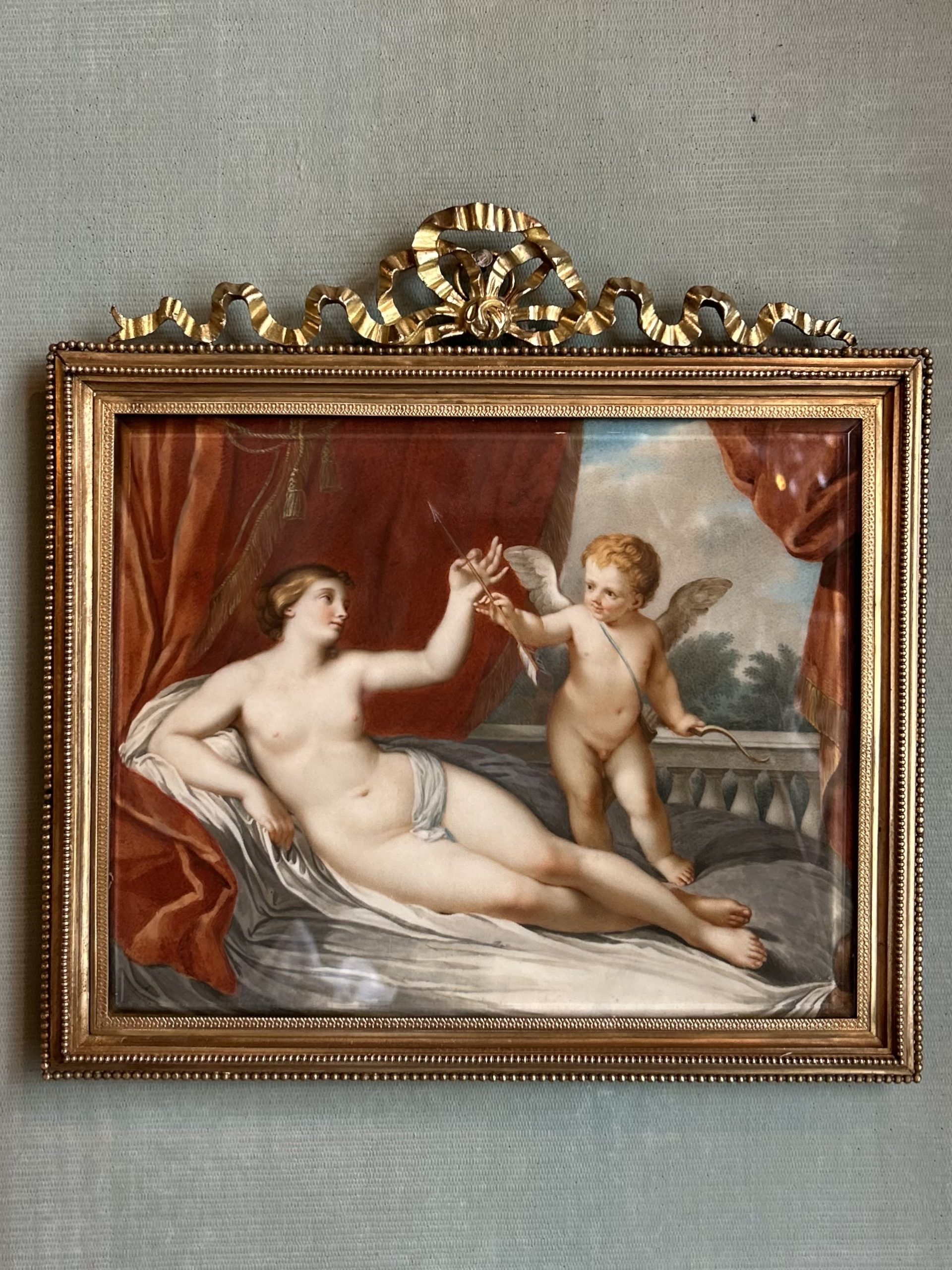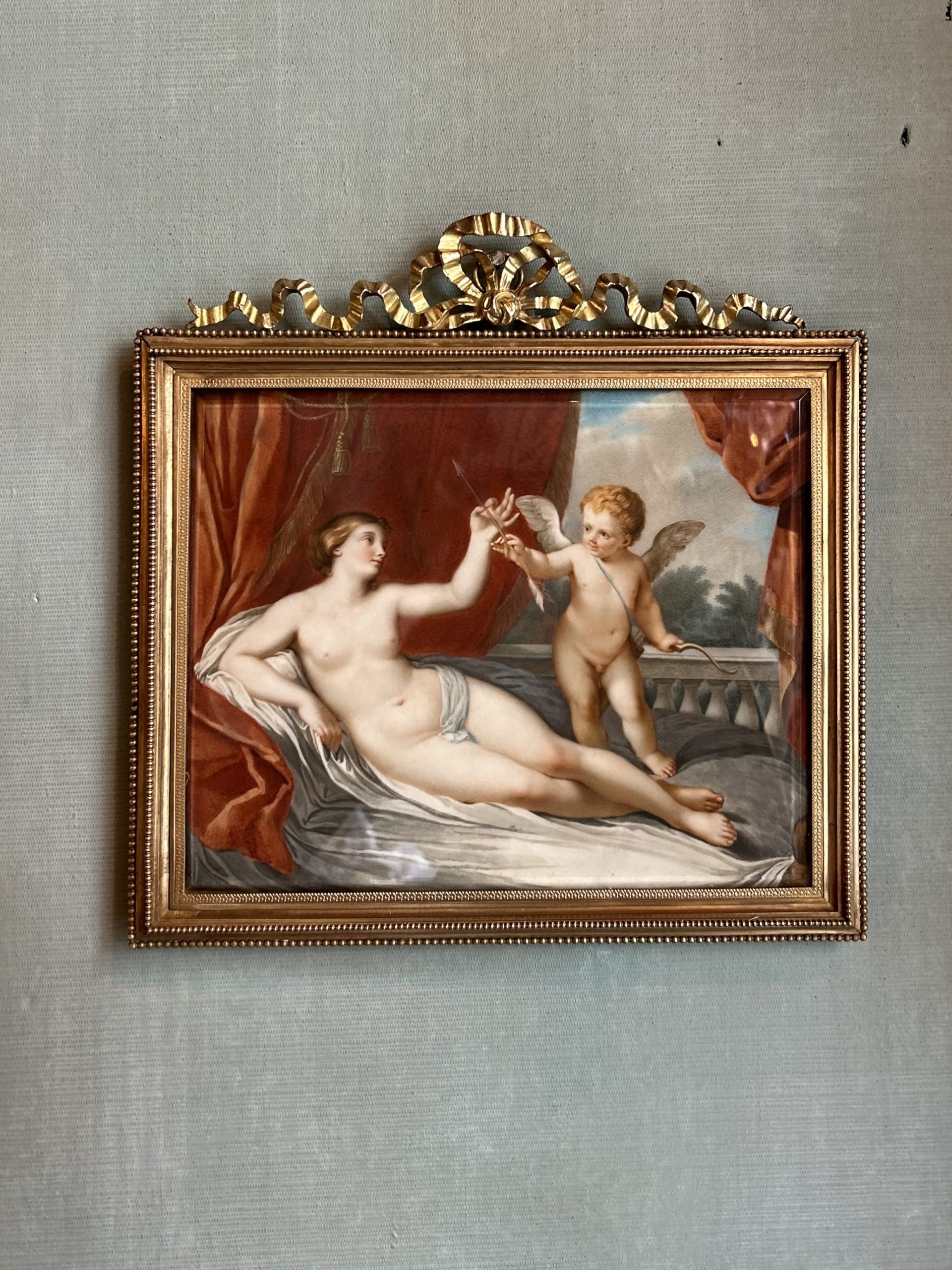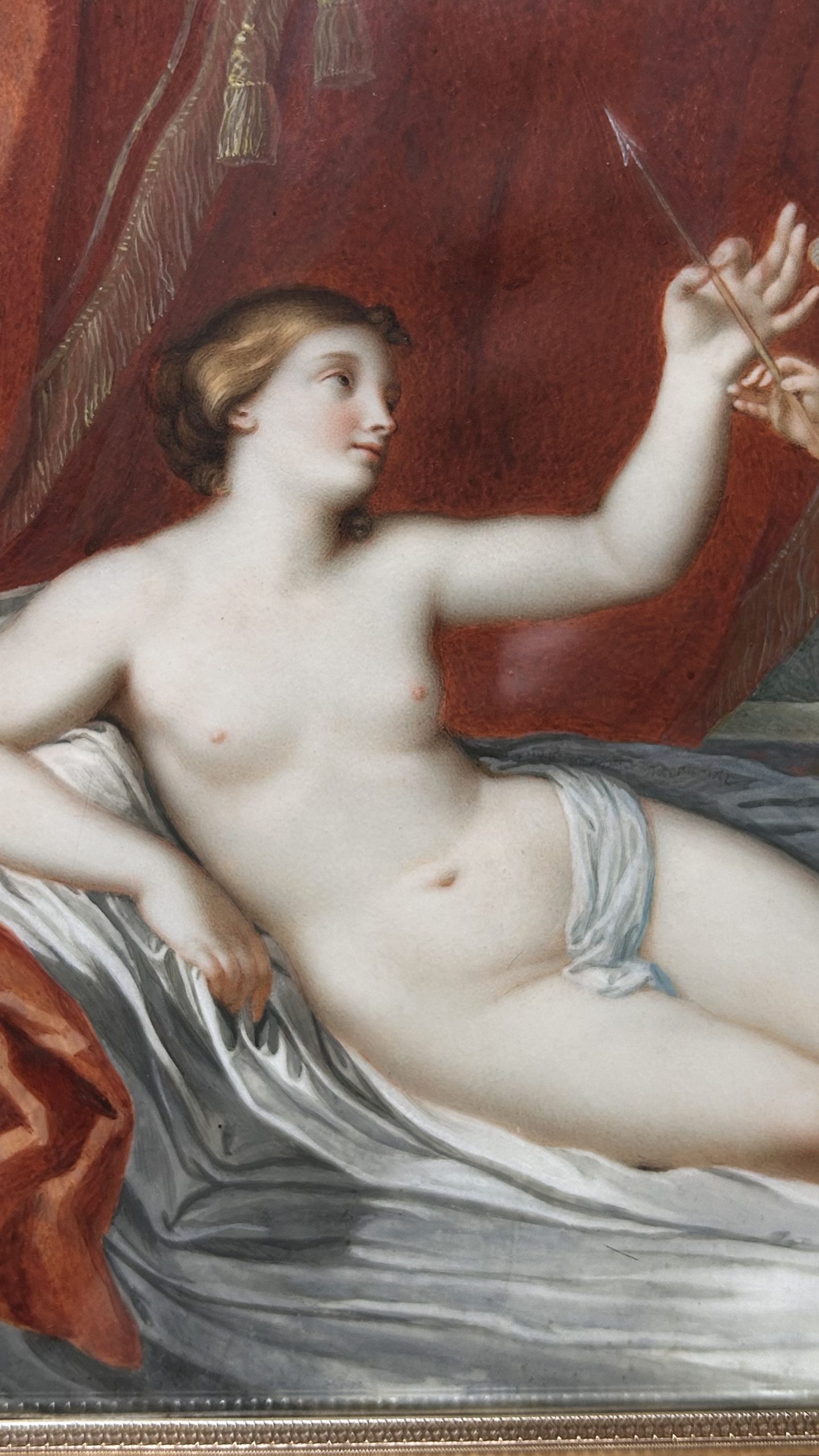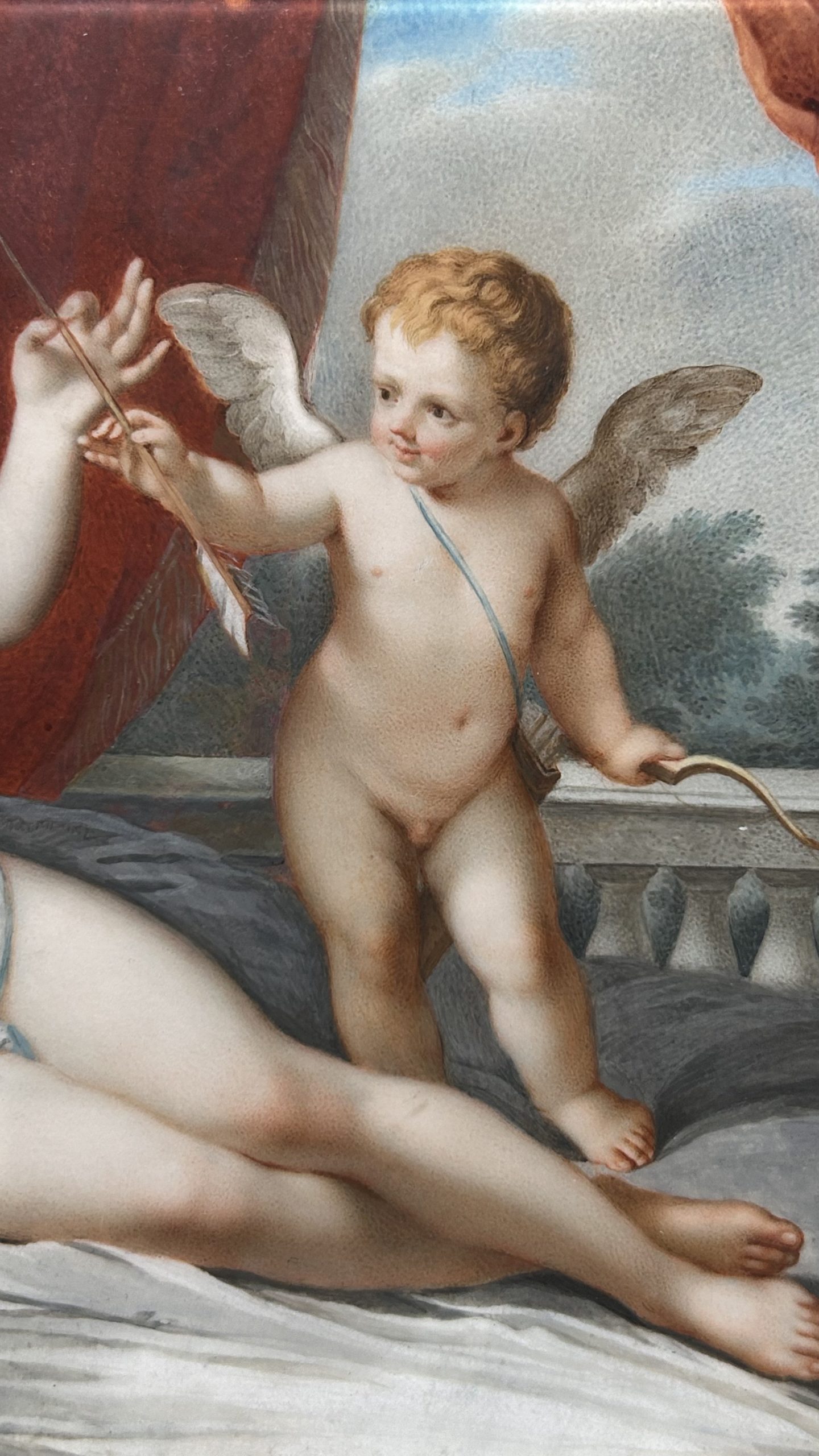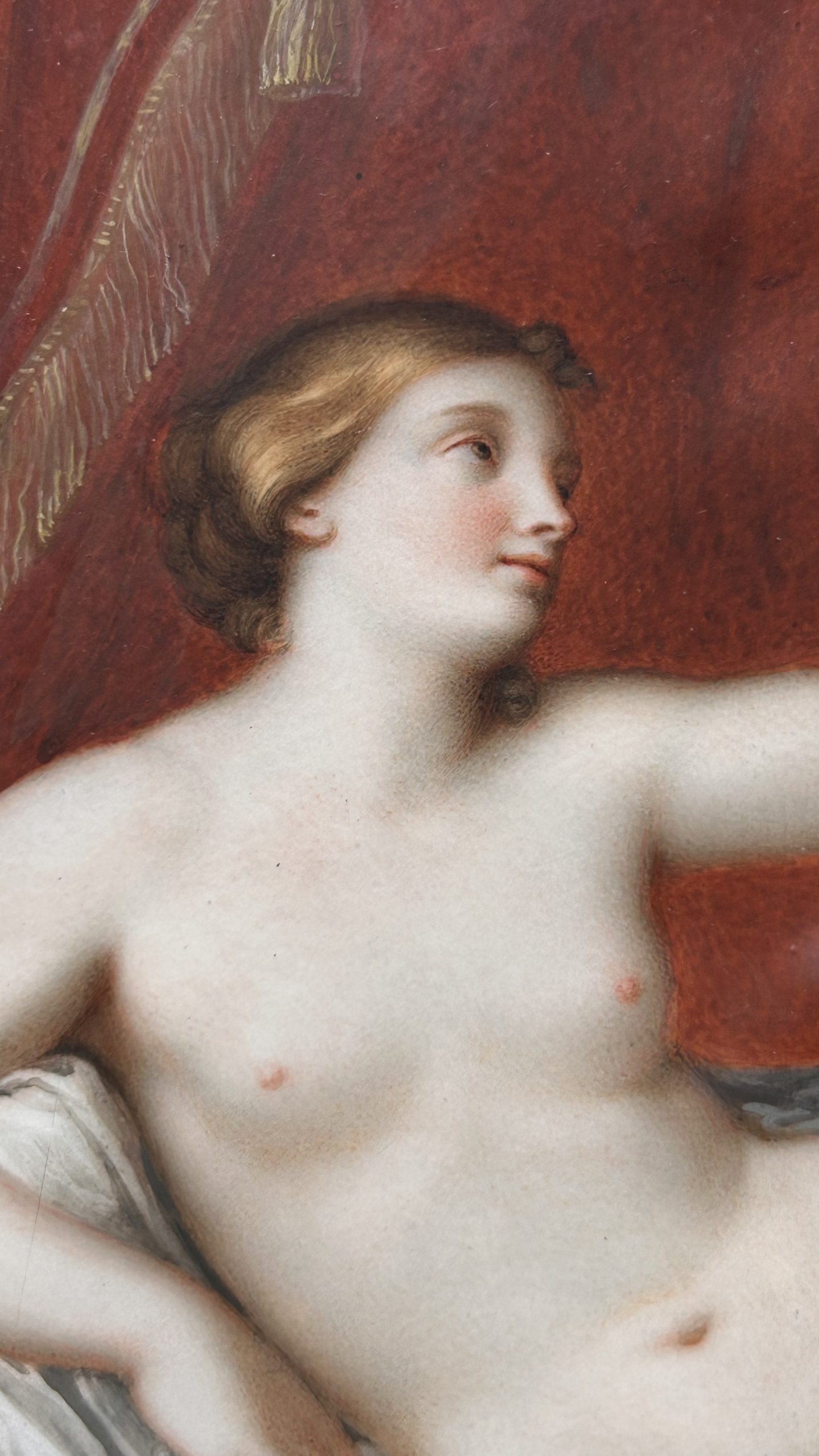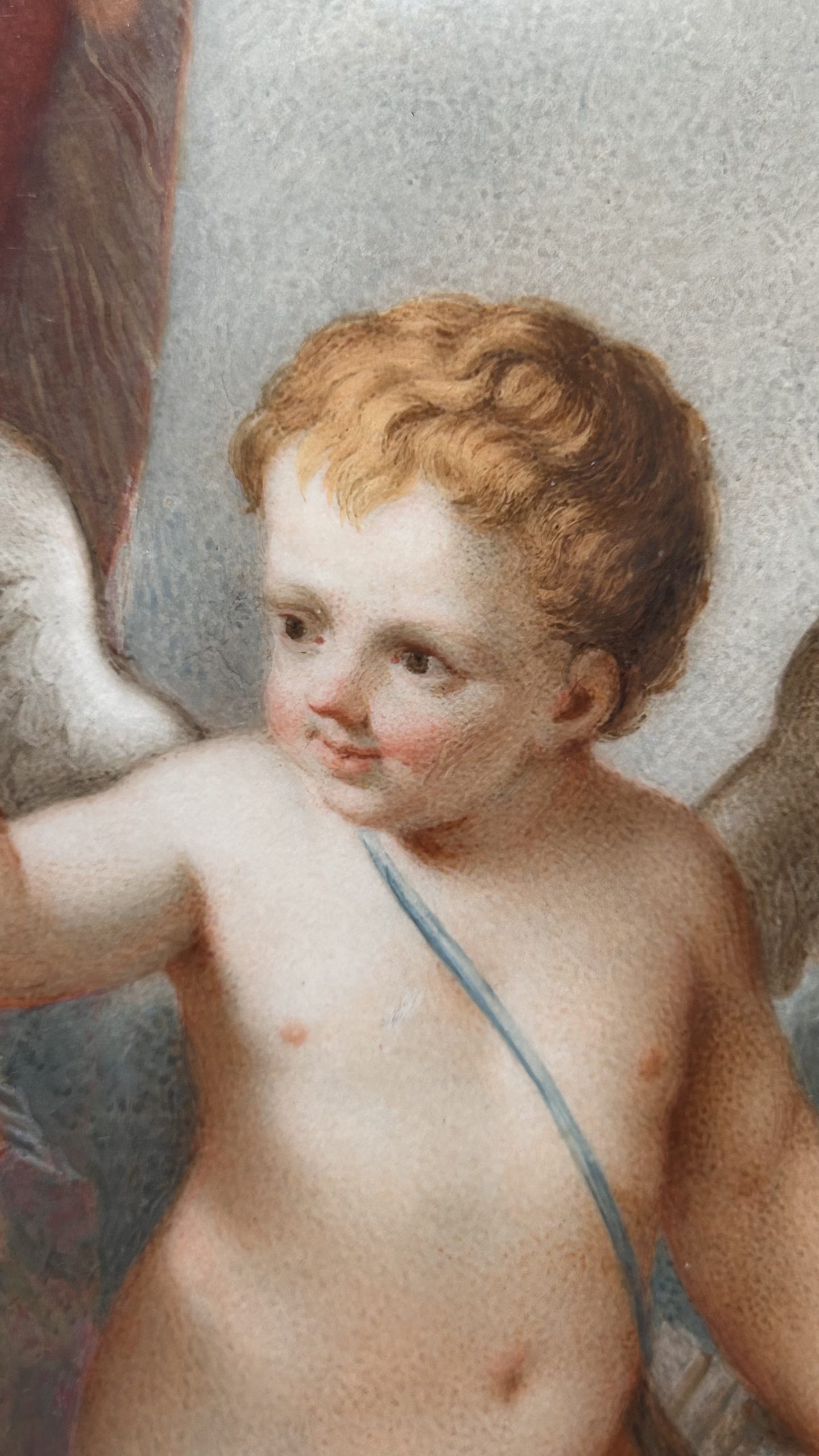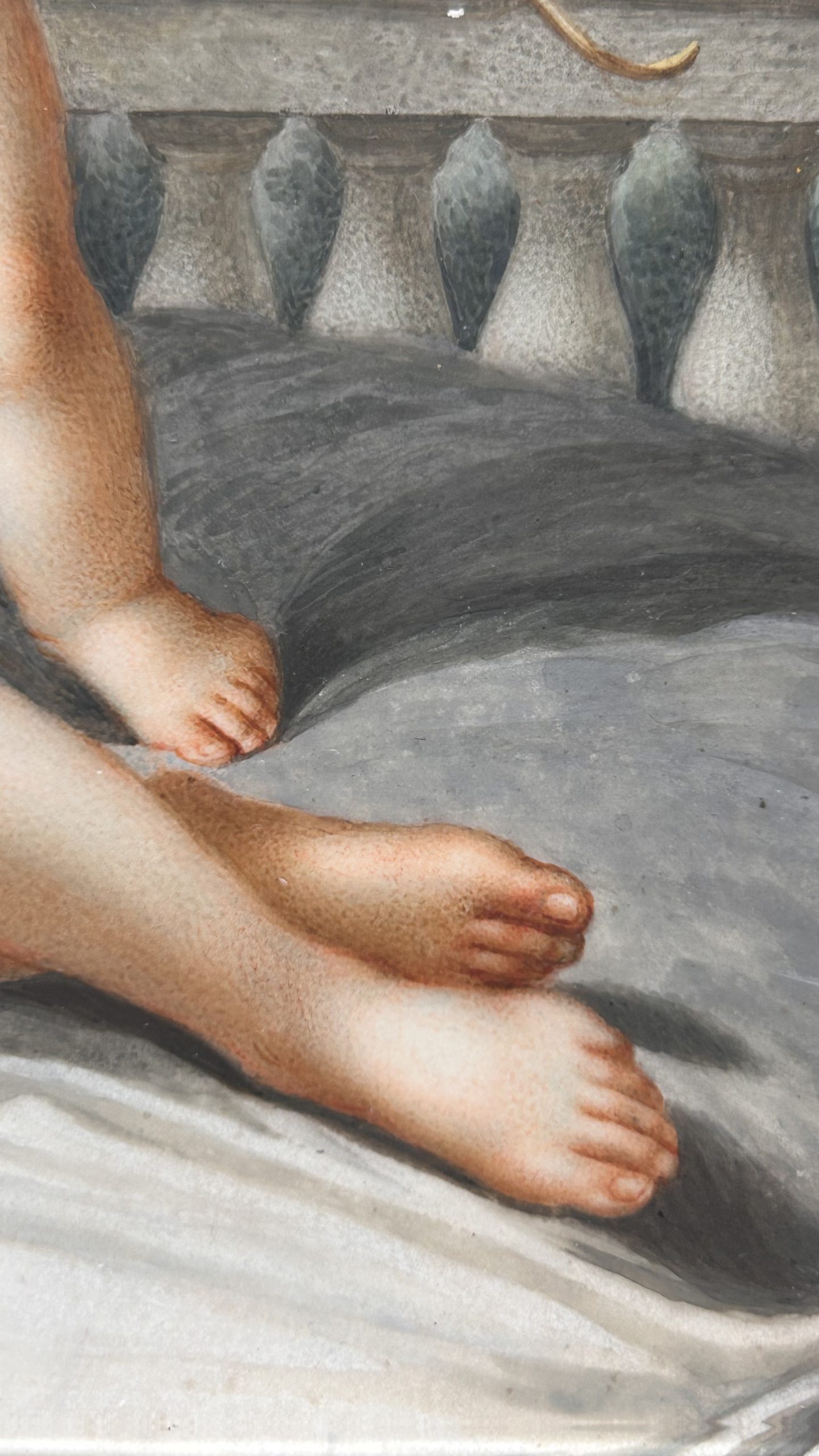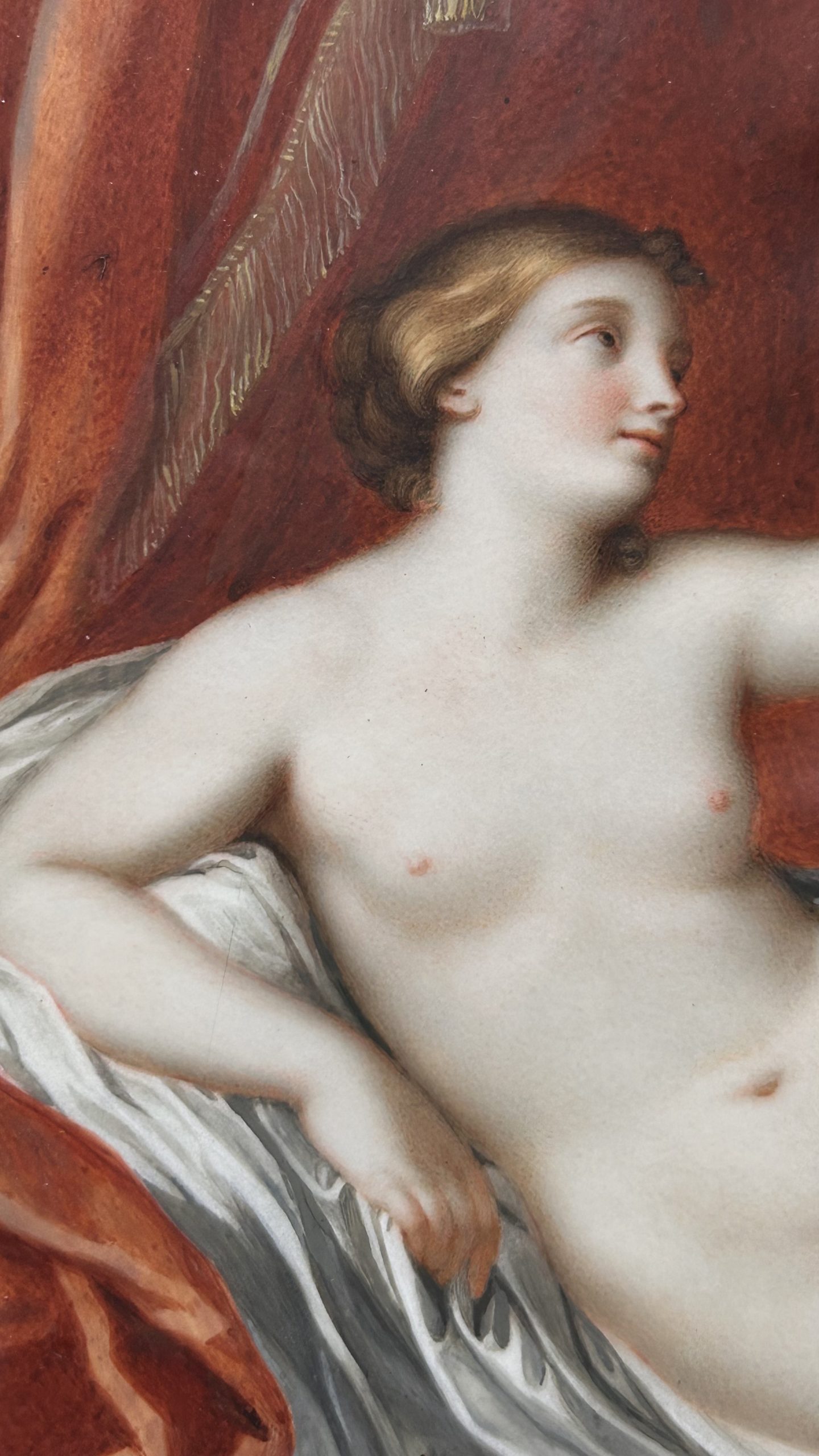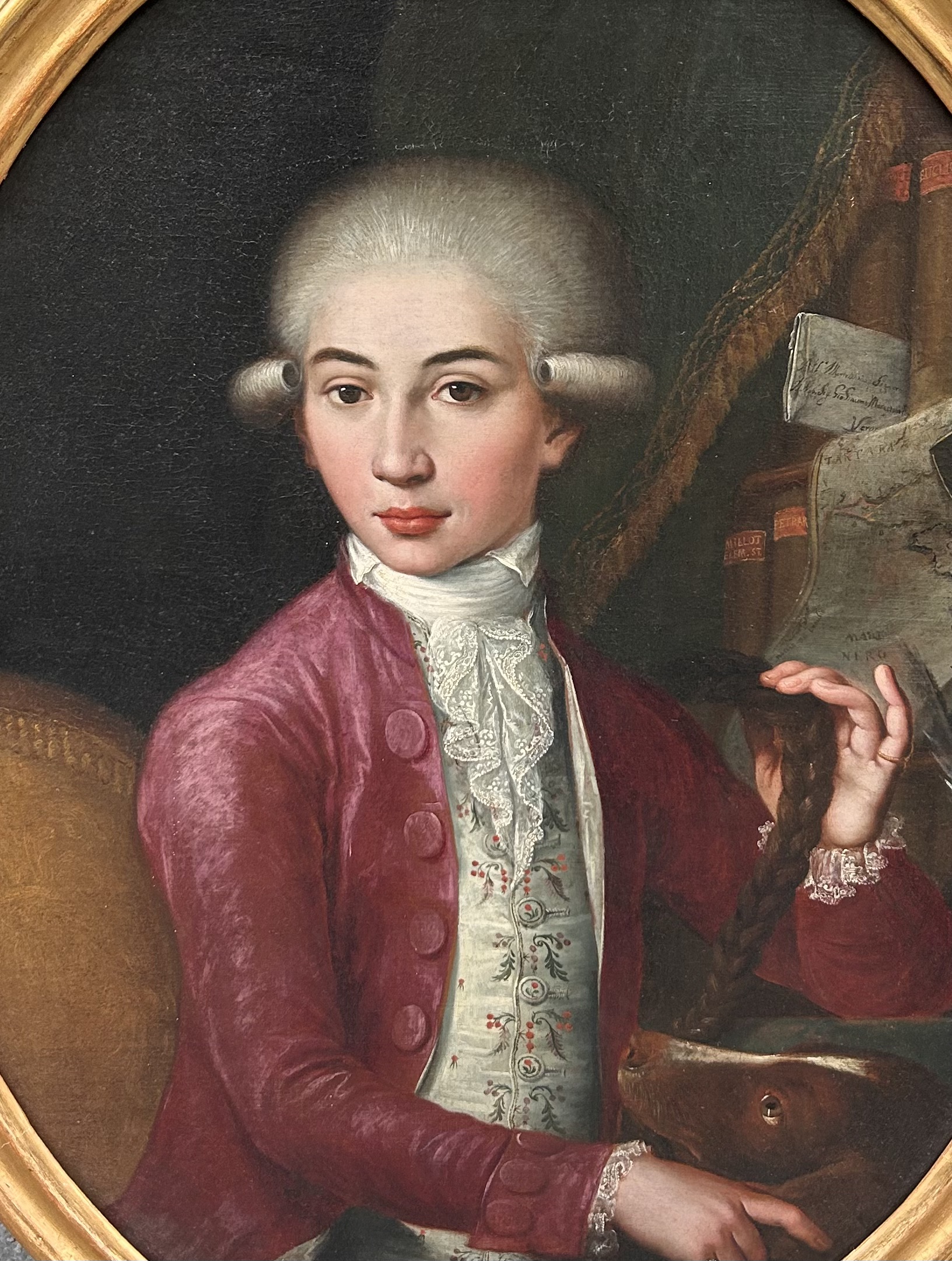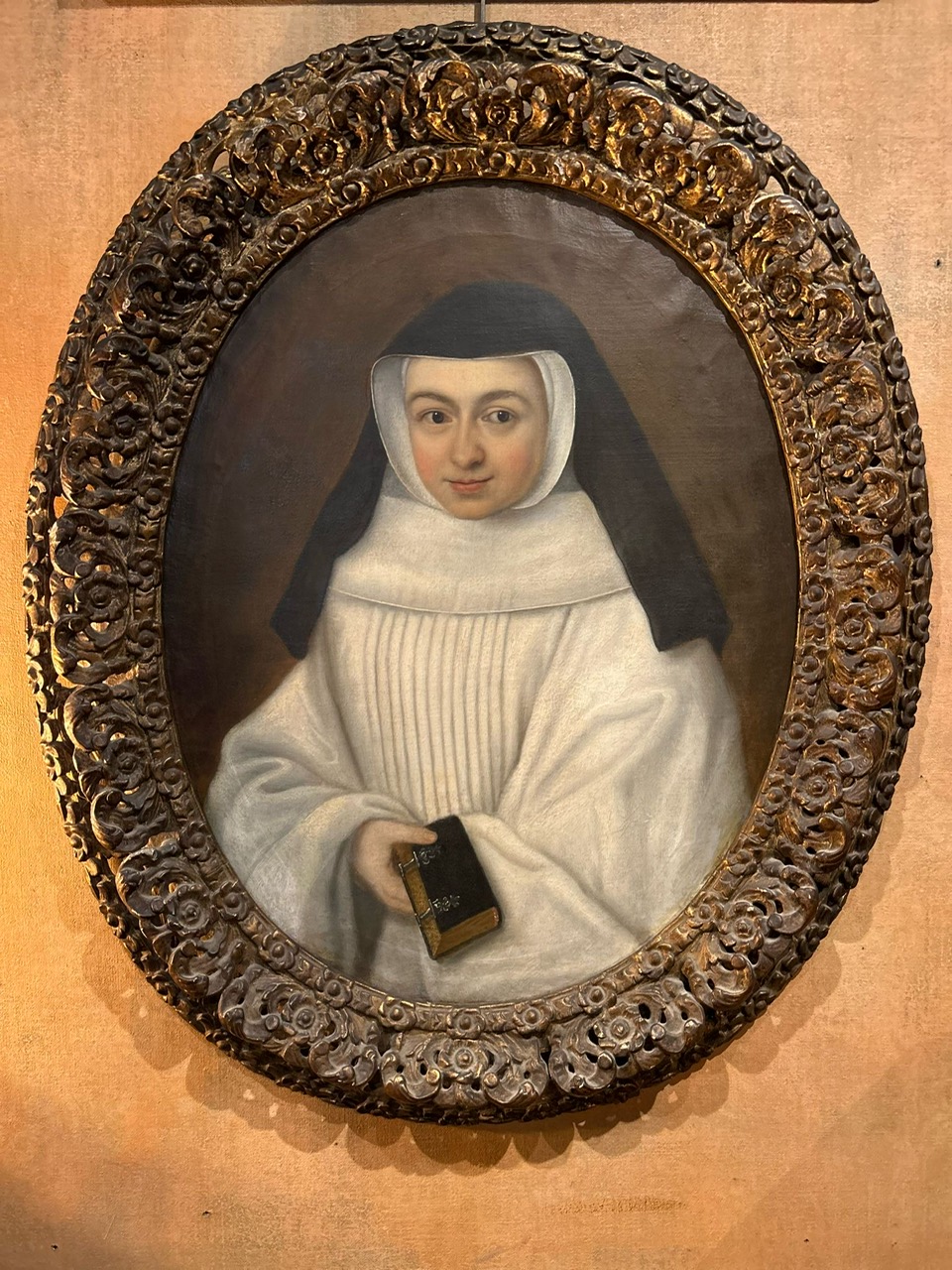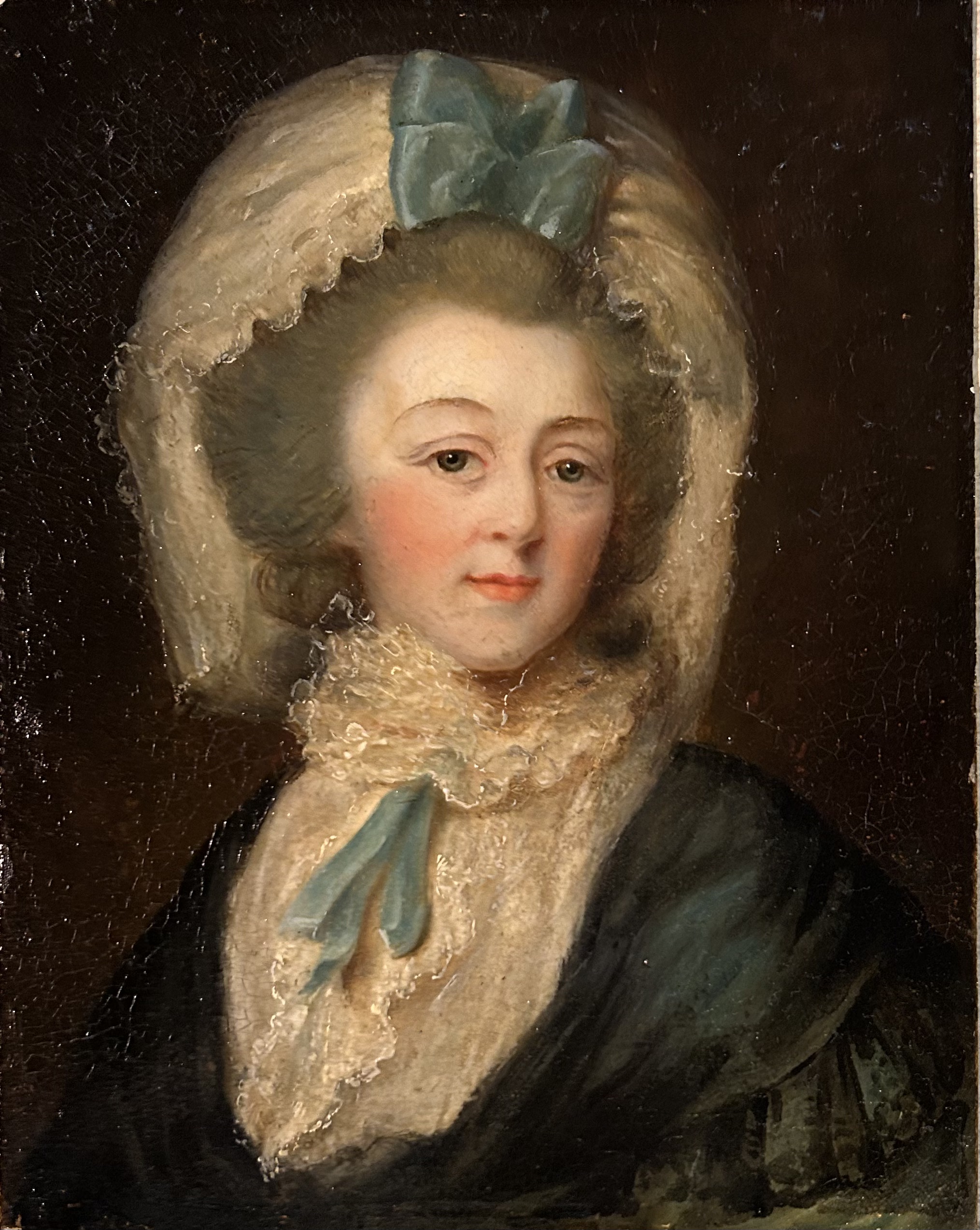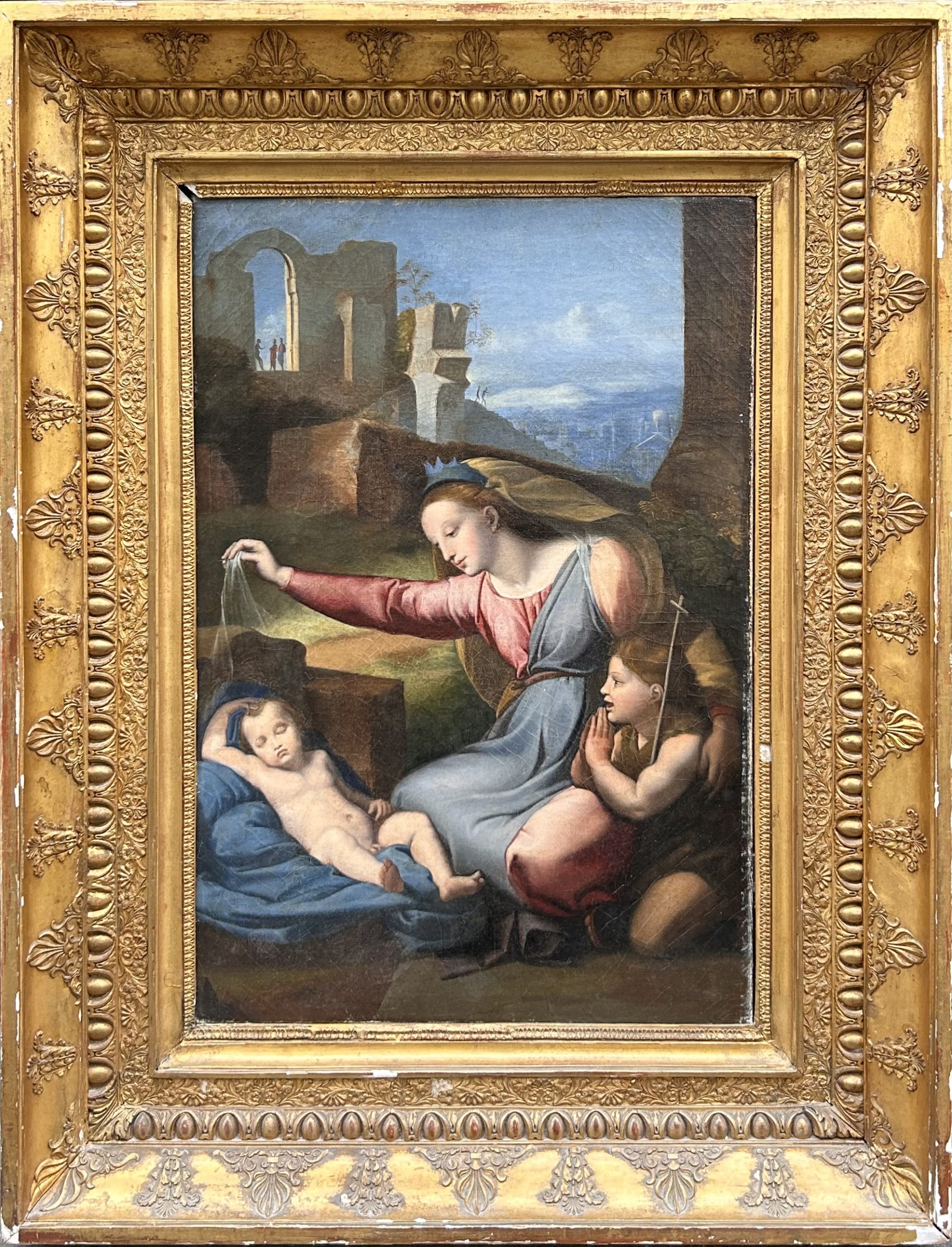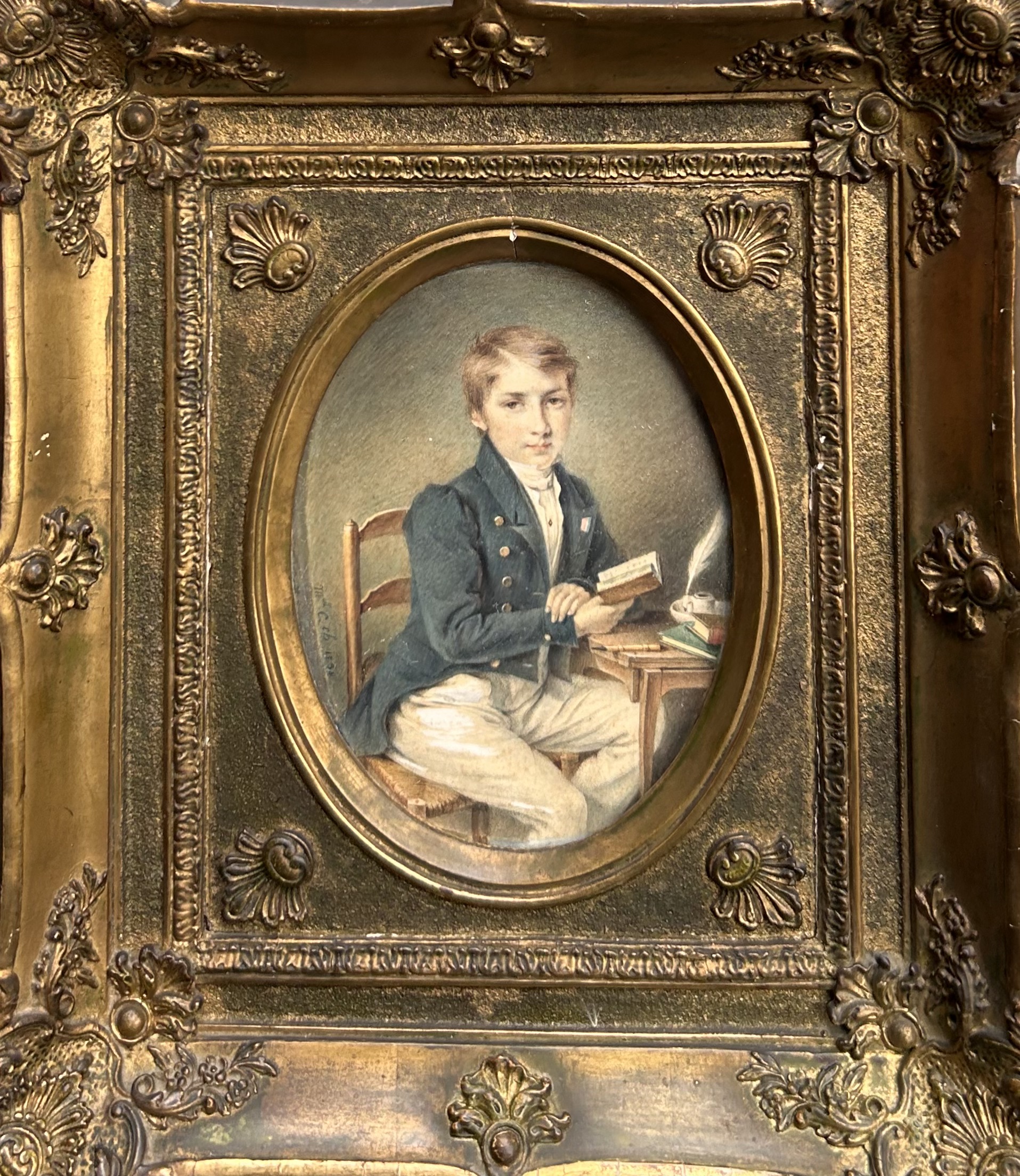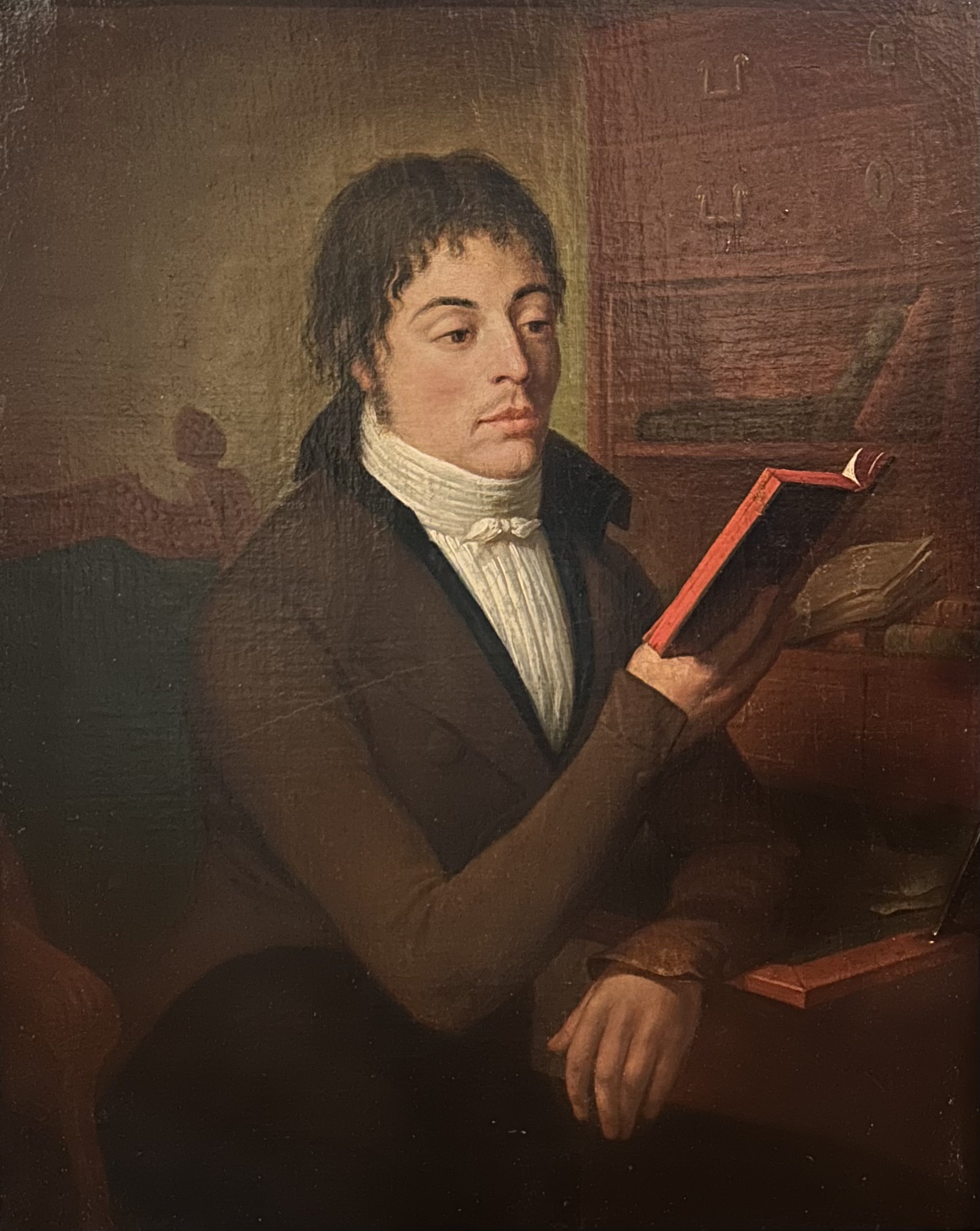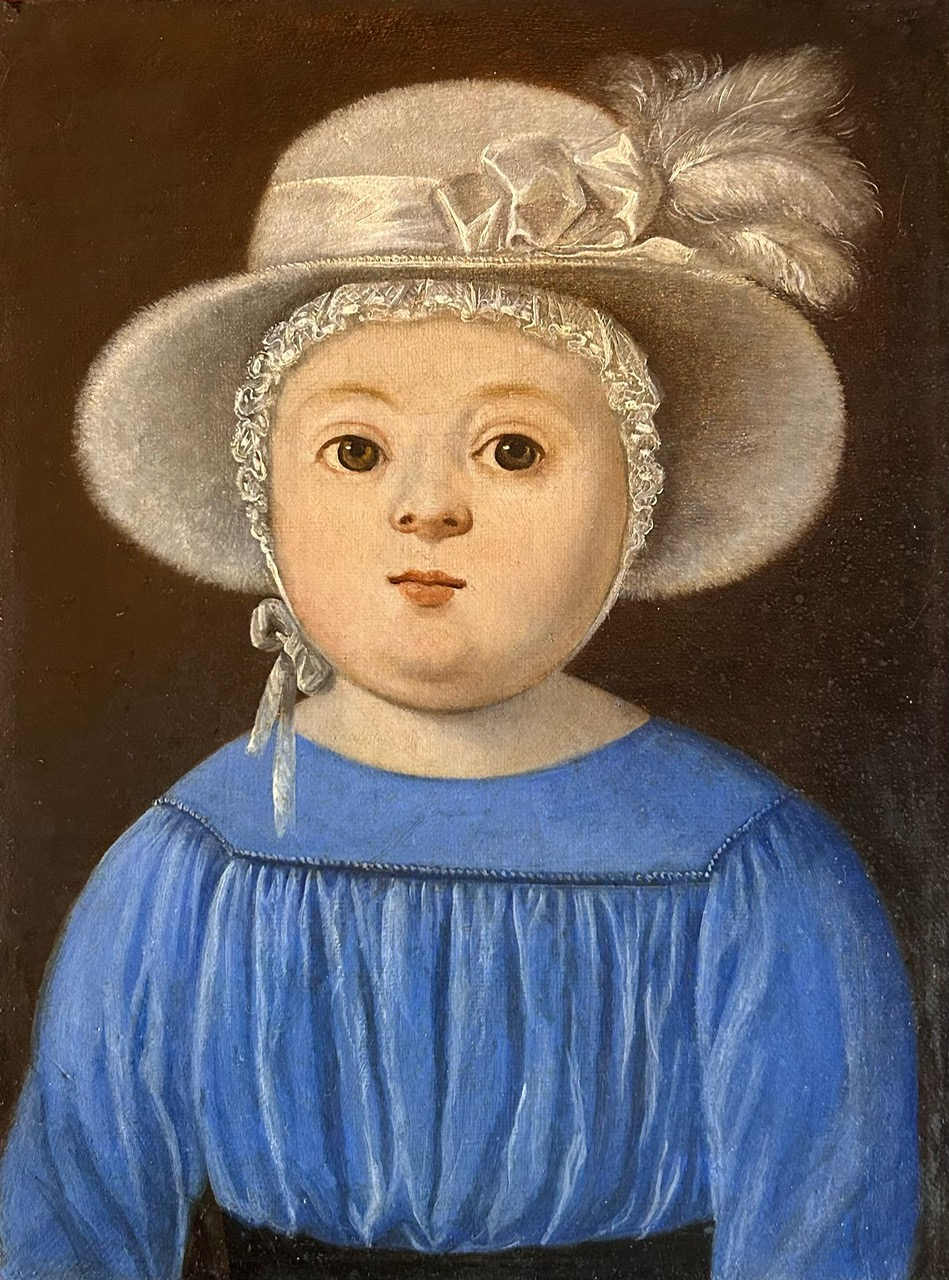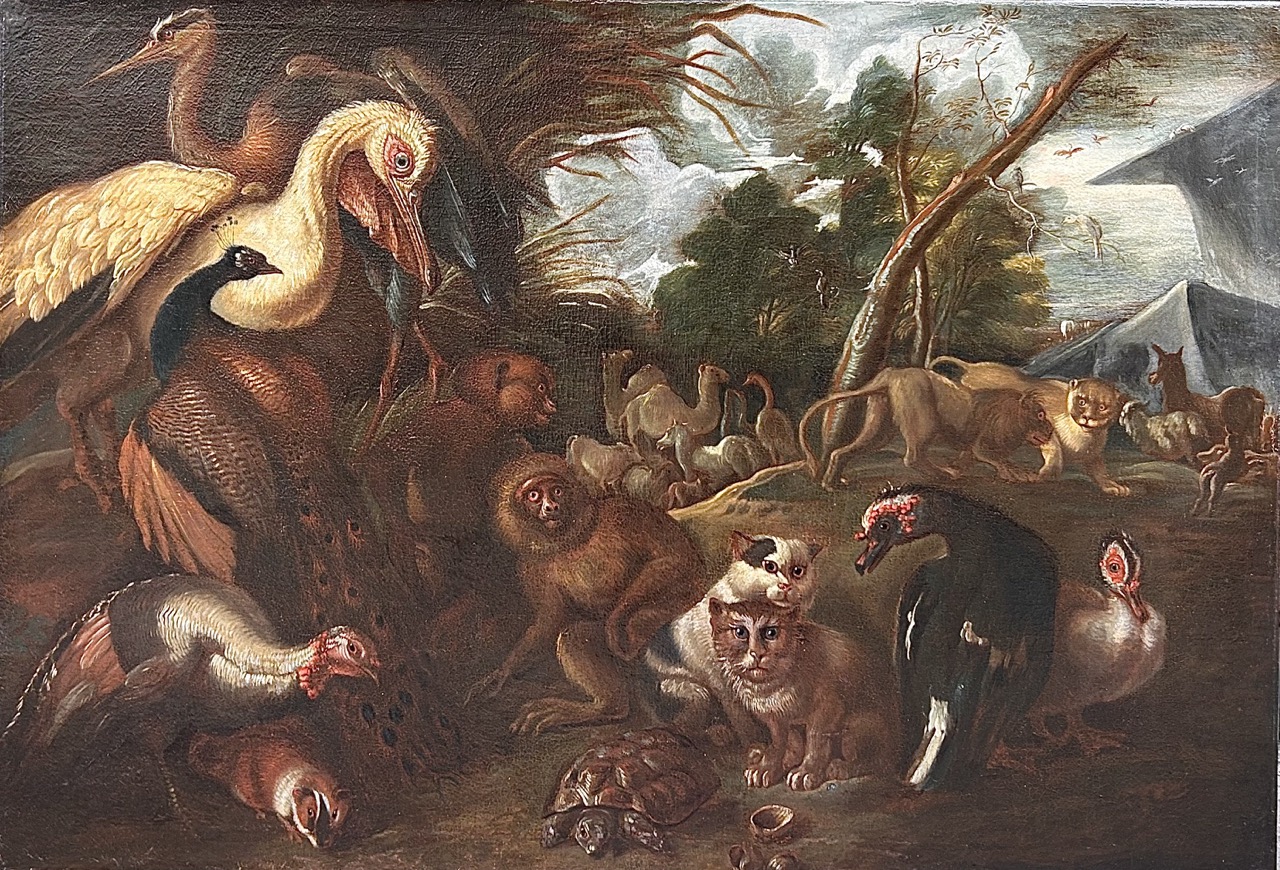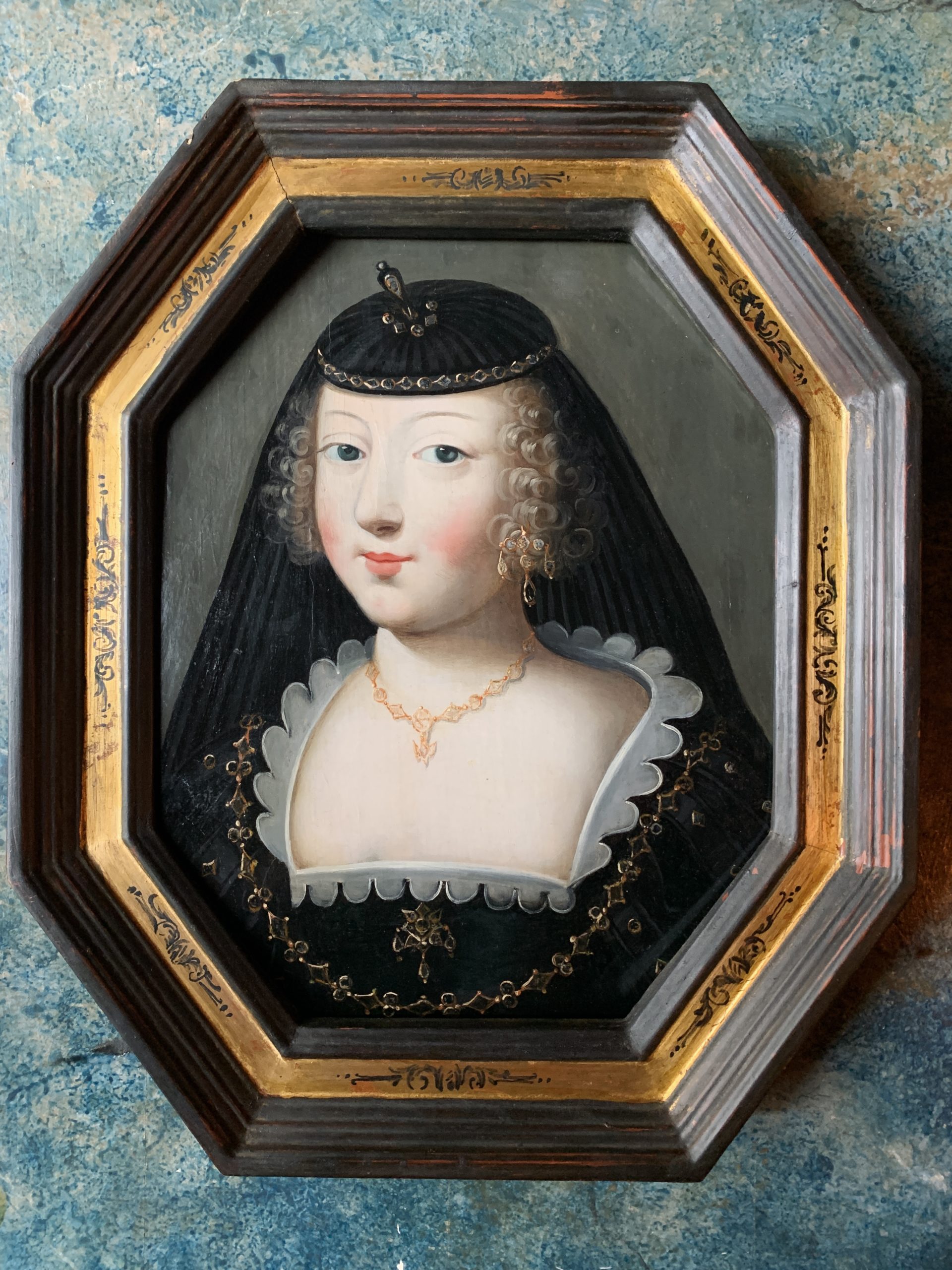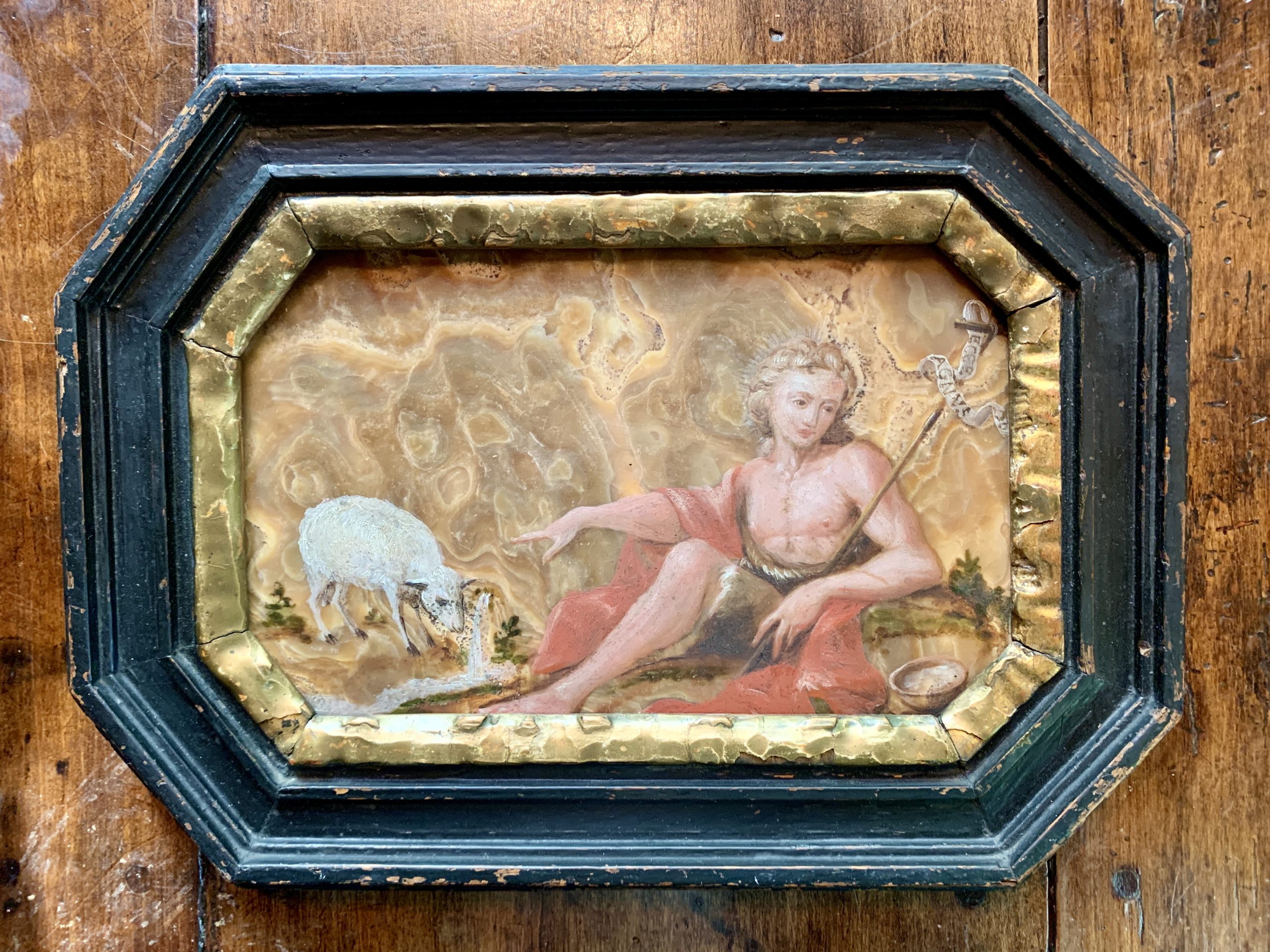Venus and Cupid after Guido Reni, gouache around 1850
“Venus and Cupid” after Guido Reni.
The scene depicted is typically classic, highlighting two mythological figures: Venus, the Roman goddess of love and beauty, and Cupid, the god of love.
Compositions of reclining Venus have a long tradition in Western art history, symbolizing ideal beauty and love. They are part of a lineage of artistic representations which have their origins in classical Antiquity, where goddesses were often represented in a sensual and divine manner.
Two of the most famous depictions of this type are Titian’s “The Venus of Urbino” (1538) and Diego Velázquez’s “Venus in the Mirror” (c. 1647-1651).
Depictions of the reclining Venus, including those by Titian, Velázquez, and Reni, share common elements: sensuality, idealized nudity, and often the presence of Cupid, symbolizing love and desirability. These works explore feminine beauty and the nature of love, while reflecting the tastes and aesthetic ideals of their respective eras.
Around 1850
France
Height with frame: 11,7 in.
Width with frame: 10,5 in.
Depth: 0,4 in.
Height without frame: 7,5 in.
Width without frame: 8.6 in.

